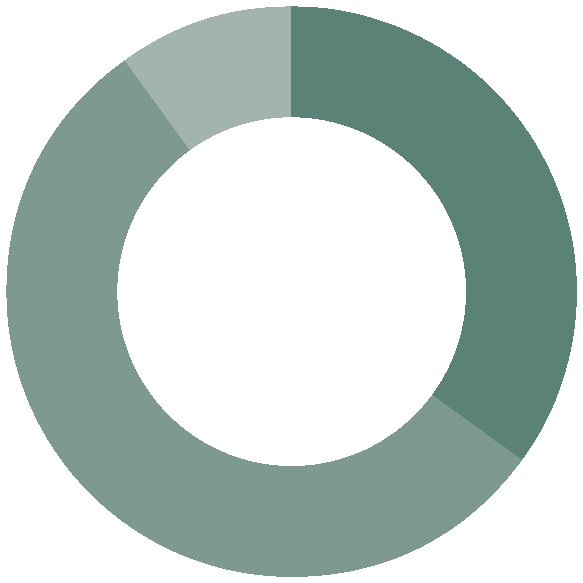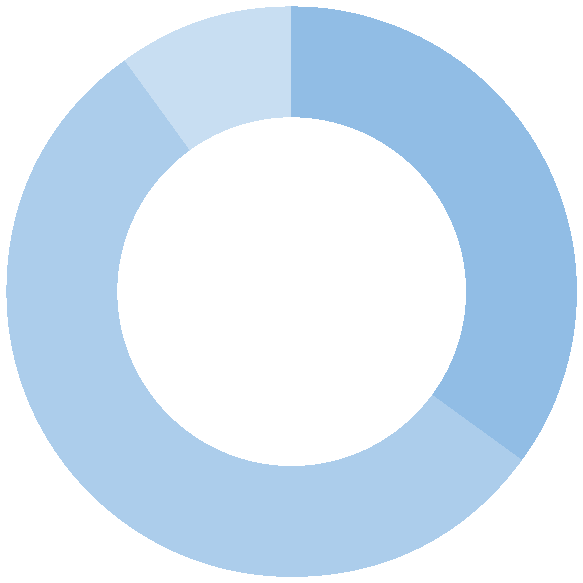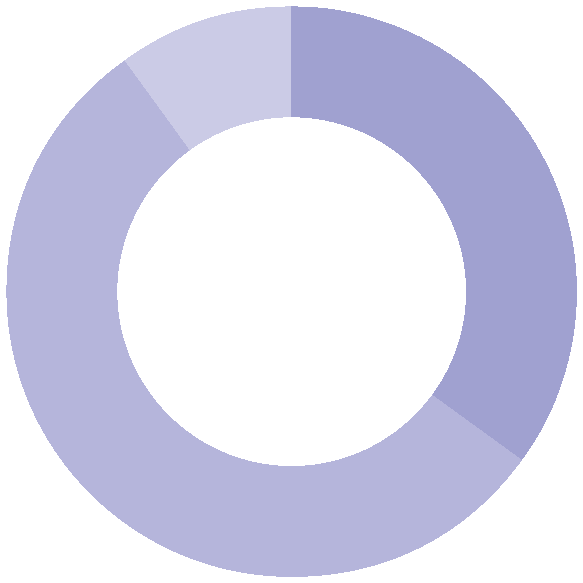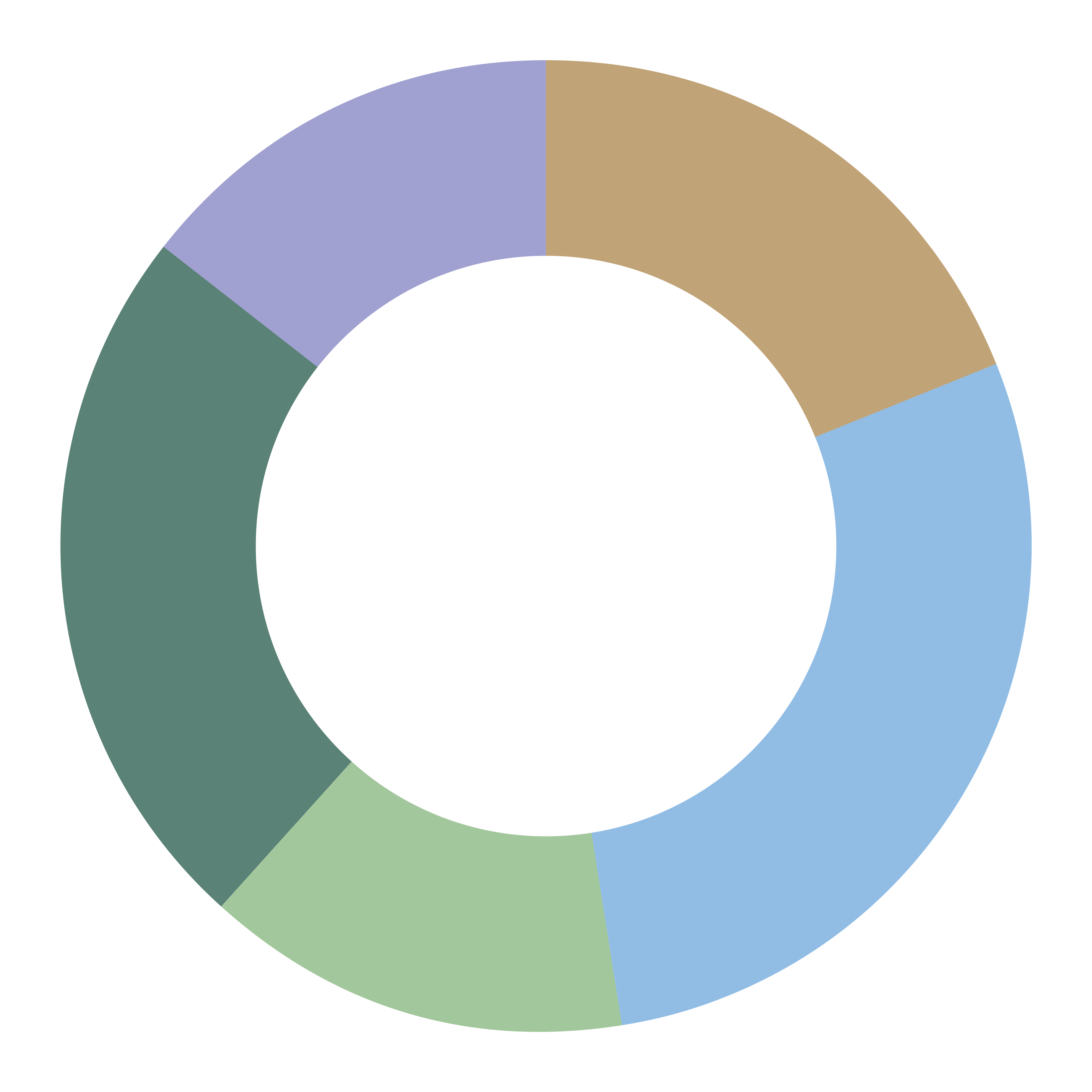-
Overview
In the past three months, the US equity market put in its best performance in over 21 years while the US economy put in its worst performance on record. The disconnect between Wall Street and Main Street has never been so apparent.
The main themes in Q2 are reflected in the titles of each of our Monthly Agenda pieces over the last three months – What happens when the government goes big? (April), Disconnected (May), and The Walking Fed (June).
1. When the government goes big
The policy response to COVID-19 has been extraordinary. In addition to the $9 trillion in global fiscal support packages, interest rates have been cut by central banks all over the world. Since the start of the year, central banks from tiny Vanuatu to the U.S. Federal Reserve have cut key interest rates no fewer than 204 times – equivalent to one rate cut somewhere around the world every 20 hours. This stimulus helped drive the initial market recovery from the low in late March to around the middle of April. The US equity market finished June up 38.6% from its March 23 low and 8.4% below its February 19 peak. Australian equities finished 30% up on the low and 18% below the peak.
Chart 1: The Federal Reserve Balance Sheet ($UStn)

Source: Bloomberg
2. The great disconnect
The lockdown of economies around the world was at its worst in April-May. We became physically disconnected from friends, families, and work colleagues. At the same time, the economic data become disconnected from anything that was happening in financial markets. The economic data was reflecting the here and now impact on spending, jobs and growth. The financial markets were reflecting what lies ahead – a recovery boosted by the extraording fiscal and monetary stimulus. There was also a disconnect within the market however. Growth-oriented companies and markets pulled away from value. In the US, growth stocks rose by 27.5% while value rose (just) 13.5%.
Chart 2: US Russell Growth/Value

Source: Bloomberg
3. The walking Fed
The US Federal Reserve, for the first time in its history, began to buy corporate bonds in the secondary market and hold them on its balance sheet. By quarter end, the Federal Reserve’s balance sheet had swollen to $7 trillion – equivalent to one third of the entire US economy. That is up by $3 trillion in just three months. So far, the Federal Reserve has bought individual bonds from 86 different companies, including AT&T, Walgreen’s, Microsoft, Pfizer and Marathon Petroleum. The move had a significant impact on credit markets – yields came down and companies began to issue new bonds in sizeable amounts. New issuance in the US has almost doubled since 1H 2019 as companies “term-out” their debt – otherwise known as “kicking the can down the road”. No wonder talk of “zombie” companies is getting louder.
Chart 3: US Corporate Bond Issuance (USD bn)

Source: sifma
-
Australian Equities


– Following the sharp drawdown in markets over late February/March, Australian equities bounced back almost as quickly over the June quarter. While earnings estimates were downgraded materially as the economy was locked down, the catalyst for the recovery was the scale and speed of the monetary and fiscal response, which provided support for households, businesses and the market.
– Domestically, the nation-wide lockdown was effective in bringing the COVID-19 case count under control, providing a further boost for market sentiment. However, a second wave of cases in Melbourne in recent weeks has tempered some of the more optimistic recovery scenarios.
– Fund manager positioning was particularly important in determining the extent of the participation in the recovery. Cash levels that had risen in March were typically deployed in April as buying opportunities emerged.
– Sector performance was again quite varied. IT was the standout sector, while consumer discretionary also outperformed, providing a significant tailwind for more growth-orientated managers. With a weak reporting season, the banks lagged the market, providing a challenge for both income and value strategies.
– Large cap strategies had a mixed set of results. Leading the way were growth managers Selector and Bennelong Concentrated, with both performing well after also protecting the downside relatively well through March.
– Other large cap managers produced results that were much in line with the market, with the exception of Investors Mutual, which was impacted by its value bias.
– Small caps fell by more in the correction, but also bounced back by a greater degree through the June quarter.
– Ophir and QVG were the standout funds, with both strategies typically displaying a relatively high beta, while Karara and Spheria slightly lagged the index.
-
International Equities


– Global equities were up 18.8% in the June quarter 2020 making it the best quarterly performance since June 2009. The bounceback coincides with equity markets hitting a bottom in the last week of March before staging a policy-induced rebound into the middle of April. The market did very little for about a month from that point but as economies began to open up in May, equities took another leg up.
– The rebound was shared fairly evenly across both developed and emerging markets. Europe was up 16% with the standout being the German DAX which was up 23.9% helped by German Chancellor Merkes European Recovery Fund. Asian markets were generally up between 15-20% though China lagged rising by just 1.7%. Interestingly, the US S&P500 rose 20.0%, the exact same percentage drop in the March quarter. Of course this doesn’t leave investors square over the six months.
– The WTI crude oil price finished June at US $39.3 per barrel – a rise of 31.8% over March. The recovery in price is driven by both a cutback in supply and by a rise in demand following the lifting of social mobility restrictions.
– The Australian dollar rose 12.6% against the US dollar in the quarter after falling 12.7% in the March quarter. The rise in the dollar meant hedged international equity funds outperformed unhedged over the three months.
– After holding up better than the overall market in the March quarter, most of our international equity managers generated positive returns but less than the overall market.
– A particular standout in the quarter was the impact of currency. Our hedged funds significantly outperformed their unhedged stable mates. The Magellan hedged fund returned 13.4% in the June quarter for example against 1.92% for its unhedged equivalent fund.
– Growth managers outperformed value in the quarter. Magellan, WCM and MFS all did better than the more value-oriented funds such as Atlas and RARE infrastructure.
– Not surprisingly, real estate is lagging equities in the market recovery. This is reflected in the performance of Quay which was also negatively affected in the quarter by its 7.5% exposure to Hong Kong. In May, the CCP announced new national security laws for Hong Kong, sparking fears of another round of protests, further depressing an already depressed economy.
-
Fixed Income


– Bond markets were mixed over the quarter. Australia’s largest stimulus package and early gains on containing the virus resulted in a better than expected economic data. This left bond yields higher and the yield curve steeper. Australian 10 year yields rose 11 basis points to 0.87%. Economic data was similarly met with a positive surprise elsewhere helping to steepen yield curves but in the US for example, setbacks in the containment of the virus left yields at the short-end lower. US 10-year yields finished the quarter at 0.66%.
– Funds with a high allocation to credit outperformed government bond funds as credit spreads that had performed poorly in the March quarter recovered somewhat in the June quarter. Bentham with its large allocation to bank loans was a standout in this regard.
– The allocation to investment grade credit was the largest contributor to performance for Macquarie in the quarter. Investment grade credit spreads widened significantly in Q1 only the rally back in somewhat in Q2 on the back of the substantial efforts by central banks around the world to ease funding pressures.
– Our new manager, Ardea, outperformed its CPI benchmark in the quarter and has generated steady, consistent returns over the past five years. Controlling volatility in the returns is a key objective for the Ardea fund and is done thorugh a combination of a very diversified portfolio as well as appropriately balancing risk in the portfolio.
– The PIMCO Global Bond Fund benefited from its allocation to mortgage backed securities as did the Aquasia Enhansed Credit Fund. After experiencing significant stress in the mortgage-backed market in the first quarter, liquidity returned in June.
-
Alternatives


– Equity Hedge Funds recovered in the second quarter led by those managers with distinct quality and growth style biases. Munro Global Growth finished the quarter up 10.5% whilst market neutral manager Bennelong Long Short Fund (+4.2%) also benefited from its preference towards companies with a stronger balance sheet as broader market sentiment shifted in this direction and away from companies with more uncertainty around earnings and future cash flows.
– The affects of the lockdowns have seen bifurcated results for the infrastructure space. Volume based operators in the airports and toll roads segments have seen revenues fall significantly through the second quarter as much of the world remained on lockdown. Conversely, utilities and availability based assets have held up well as investors look to safety of cash flows and government backed counterparties. Data centre operators have also seen a big tailwind coming from the well publicised technological adoption across the world as large parts of the global population adapted to working from home. AMP Core Infra finished the quarter up 2.6%, allocations to airports acted as a detractor over the quarter whilst PPP style assets and listed data centre exposure were the biggest winners in the quarter.
– Private markets have seen a recovery in prices over April and May as Partners group posted gains of 1.24% and 2.96% respectively but deal activity remained low. Interestingly, 62% of private equity fund managers recently surveyed by Preqin expected to see no negative or even slight positive impacts from the crisis on their funds’ performance. Those with newer vintages and more dry powder in their portfolio may be able to take advantage of lower asset prices at this time.
– Property markets have also seen divided outcomes as retail and hotel based funds have taken a large hit to rental incomes as physical stores and hotels remained closed for large parts of the quarter. Parts of the office space have remained resilient despite the trend towards working from home for many. Charter Hall Direct Office Fund reported little disruption to collections, over 60% of their tenant profile is made up of government entities, Suncorp, Coles, Western Sydney University and Westpac. Barwon Healthcare Property fund reported better than expected rent collections for the quarter and was in the position to pay a distribution of $0.0594 representing a yield of 5.8% for FYE ’20.














